An Overview of India’s Regional Cuisines
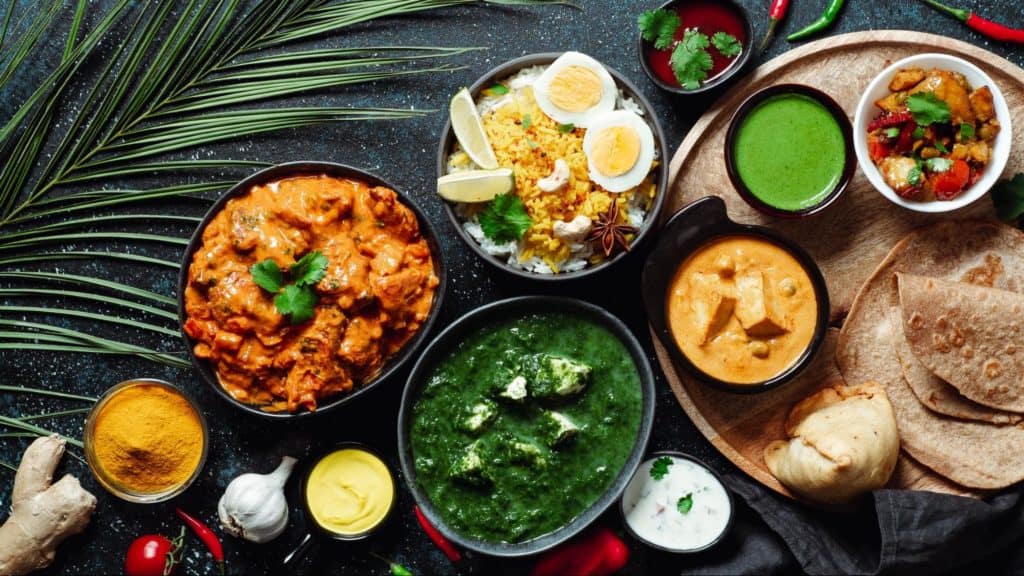
If the only Indian dishes you’ve eaten are butter chicken and garlic naan, then you’ve only experienced a fraction of what Indian cuisine has to offer.
The country is home to over 1.4 billion people, 120 languages, 9 religions, and 29 states, each containing its own unique landscape and customs.
There’s a truly immeasurable array of culinary diversity and cooking styles throughout the subcontinent, along with heavy influences from thousands of years of immigration, trade, and conquest.
None of us can fully comprehend the different layers and flavors available, though we can dip a toe into the ocean of experience available within Indian cuisine.
Read on to learn all about the similarities and differences between Northern and Southern Indian food along with some delicious dishes that you might not have come across on your last trip to an Indian restaurant.
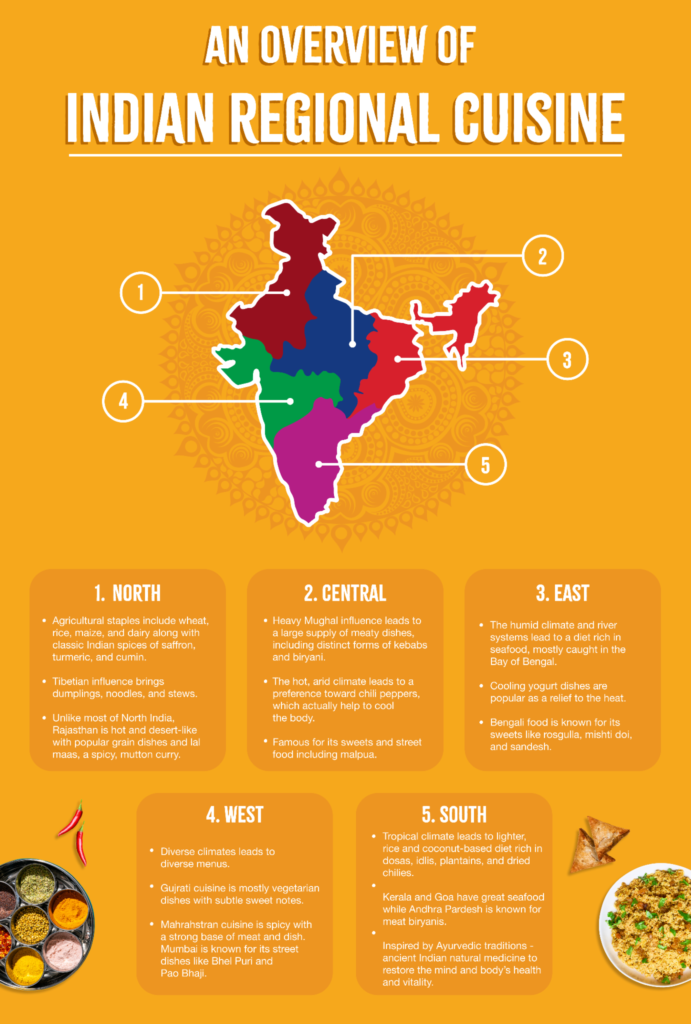
Northern Indian Cuisine
Northern Indian cuisine is heavily influenced by the surrounding landscape from the Himalayas to the north to the Indo-Gangetic Plain, often referred to as “the food bowl” within Indian borders.
The historic mountain range creates a temperate, dry climate compared to the nearby regions of Kolkata and Mumbai. The rolling topography, especially near Punjab, leads to a food somewhat mirroring European and American agriculture with rolling fields of wheat, rice, maize, and dairy along with classic Indian aromatic spices of saffron, turmeric, and cumin.
Along with the influence of the land, the history of immigration, trade, and conquest also leaves a noticeable impact on Northern Indian food. Many of history’s most infamous conquerors like Genghis Khan and Alexander the Great laid claim to the region at some point or another.
Many classic Northern Indian dishes reflect Persian, Turkish, and African influence as disparate communities funneled into the region. For instance, the Mughal Empire brought classic dairy delicacies like paneer, ghee, and yogurt to Punjab during the 16th and 17th centuries.
This dairy tradition is reflected in the richer dishes that permeate much of the cuisine of Northern India. Think melt-in-your-mouth Tandoori Chicken, creamy Palak Paneer, or mouthwatering Chicken Tikka Masala.
Finally, Tibetan influence trickles down from the mountains with dishes more closely resembling classic East Asian recipes with dumplings (called momos in India, Tibet, and the broader Himalayan region), noodles, and stews being some of the most popular menu items.
Southern Indian Cuisine
Like Northern Indian food, Southern Indian cuisine is influenced heavily by its landscape, nestled between the Arabian Sea to the west and the Bay of Bengal to the east. The resulting tropical climate leads to a lighter, rice-based diet rich in coconut, tamarind, plantains, and dried chilies.
That said, Southern India certainly has its fair share of tempting pastries with dosas, vada, idli, and uttapam as some of the most popular sweets and savory breads in the region.
Lighter oils and generous use of spices mingle with seafood dishes that take advantage of ample water sources like meen moilee, a creamy coconut and fish curry dish.
The cuisine also draws heavily upon Ayurvedic traditions — ancient Indian medicine that seeks to restore the mind and body’s health and vitality through natural means.
If you ever find yourself in South India, seek out fiery seafood dishes in Goa along with their famous vindaloo curry. You should also look towards rich yet delicate puttu (rice cakes) and kadala curry in Kerala, mouthwatering nethili fry (anchovies) in Chennai, or other delicious options in famous south Indian cities like Bangalore, Hyderabad, and Kochi.

Western Indian Cuisine
Western Indian cuisine is closely related to Northern Indian food. Due to a scarcity of fresh fruits and veggies across Western India, dried lentils and legumes feature in nearly every dish, along with a host of barley and millet-based bread types.
One of the largest cities in all of India, Mumbai (formerly known as Bombay) is located in the state of Maharashtra and is world-famous for its rich seafood and meat dishes. Mumbai is also known for its scrumptious street foods with dishes like Bhel Puri, Vada Pav, and Pav Bhaji.
Despite the lack of fresh produce, the Western Indian state of Gujarat is vegetarian central with nearly 75% of the inhabitants following a plant-based diet.
Here, you’ll find the Gujarati thali, a mouthwatering platter of sabzi or shaak (mixed vegetarian dishes), kadhi (sour yogurt curry with veggie fritters), dals, and steaming basmati rice and soft roti, or “rotli” as it is called in Gujarati.
However, as you approach the coastline, the food options multiply with pickled vegetables, chutneys, and seafood trickling onto restaurant menus. This is the “Jewel of Western India.”
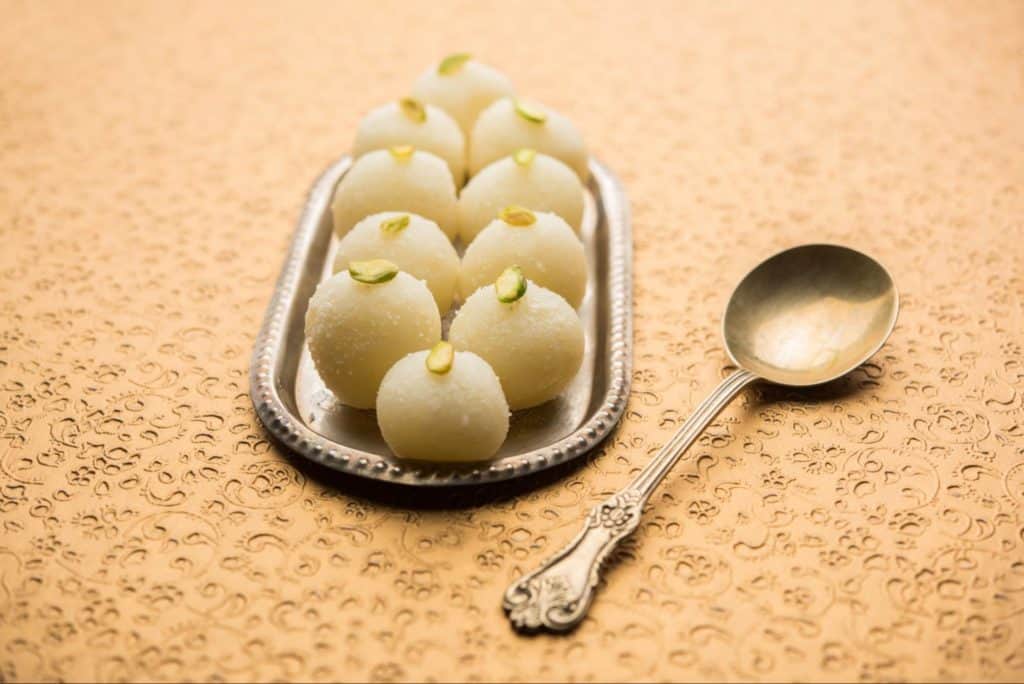
Eastern Indian Cuisine
Eastern India just might take the cake for most rain out of all the Indian regions. With a humid climate and extensive river and lake systems, fresh produce and rice are easy to come by.
Popular fish dishes like machher jhol (creamy tomato fish curry) are enjoyed alongside dalma (lentil stew) and red chili chutneys. Much of the dishes revolve around providing some cooling respite from the heat, so cooling yogurt dishes are also a mainstay in the kitchen.
In West Bengal, fried snacks like bhaja and luchi play beautifully with creamy chickpea dishes like chana dal.
Although, Bengali food is perhaps most well-known its succulent sweets, with payesh (rice pudding sweetened with cane sugar and date palm sap) competing with rasgulla (paneer and syrup-filled dumplings) and ras malai (rasgulla dumpling in creamy milk pudding) for the top dessert around town.
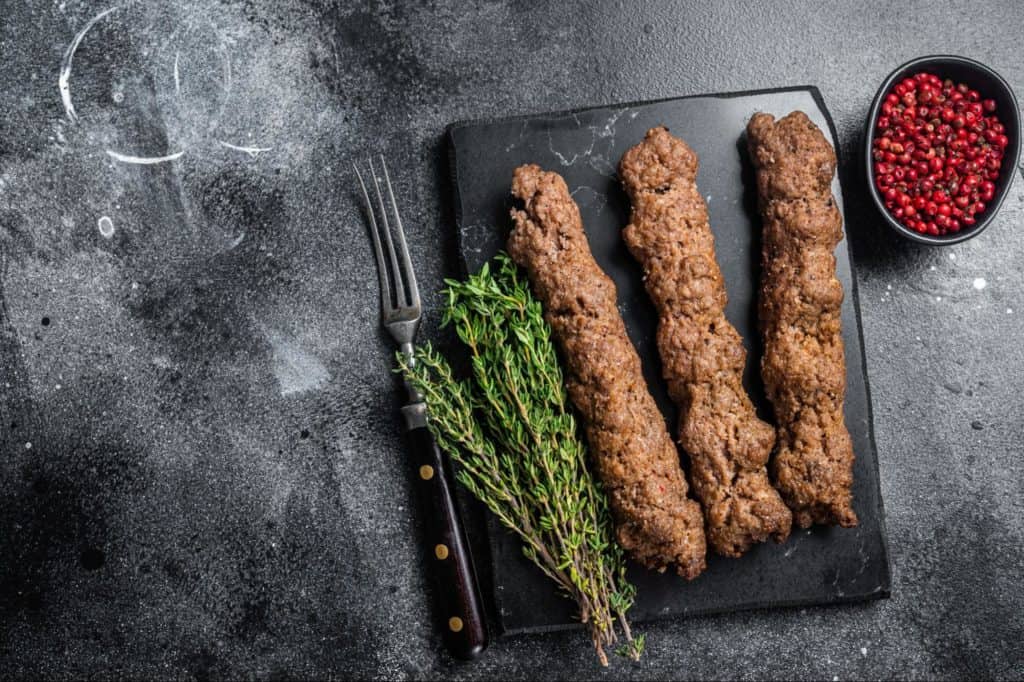
Central Indian Cuisine
Finally, we come to Central India, including the states of Uttar Pradesh, Madhya Pradesh, Bihar, Jharkhand, and Chhattisgarh. The hot, arid climate leads to a (perhaps counterintuitive) preference toward chili peppers — the hotter the pepper (and the more you sweat), the cooler you’ll be!
Heavy Mughal influence leads to a large supply of meaty dishes, with kebabs being the staple dish in Uttar Pradesh. Of course, the population is anything but monolithic, and a significant Jainist population means that vegetarian dishes also feature heavily.
If you find yourself on a trip through Central India, don’t forget to seek out some chaats (street food) like crispy sev, samosa chaat, dahi vada, and chole tikki.
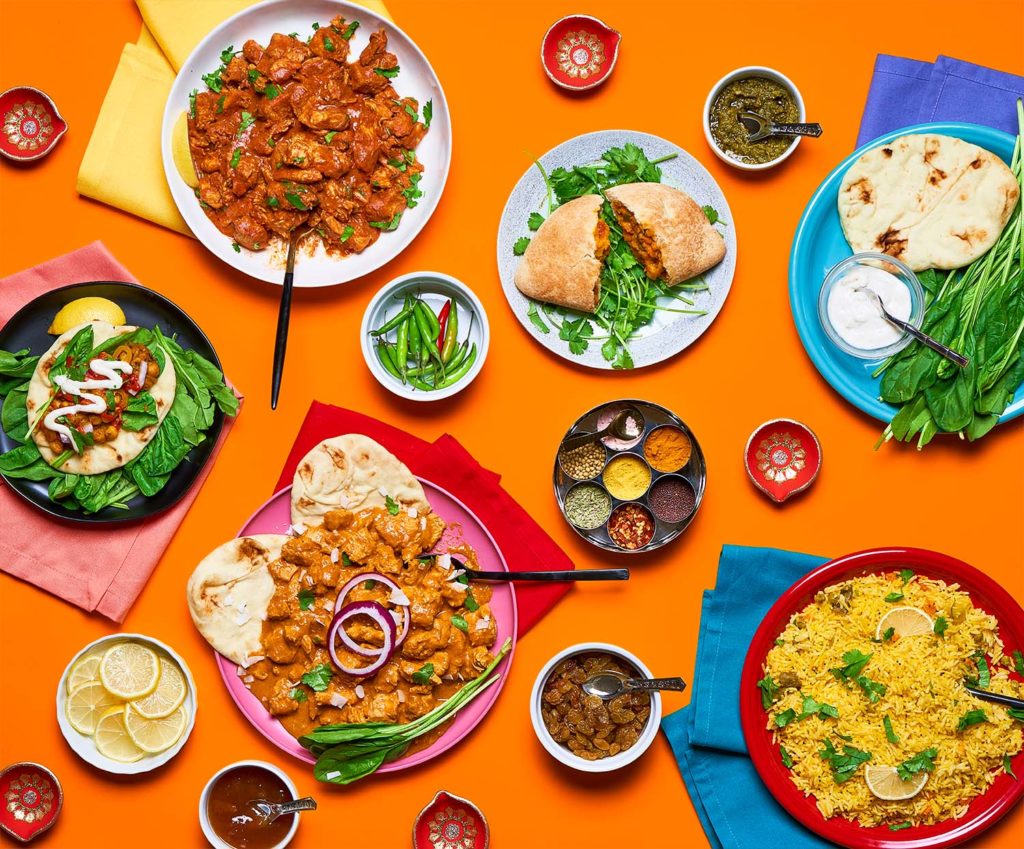
Explore the Regions of India with Sukhi’s
From the snowy hilltops of the Himalayas to the sweltering monsoons in the Bay of Bengal, India’s landscape and culinary traditions are so vast that it can be intimidating just to wrap your head around them.
No one can experience all the delicious dishes available. Though, that doesn’t mean we shouldn’t try.
From our Northern Indian-inspired Chicken Tikka Masala to our Southern Indian-inspired Vindaloo and Biryani to every samosa, sauce, and chutney in between, take a culinary trip around India with Sukhi’s.
Our mission is to erase the boundaries between your desire to explore mouthwatering Indian dishes and your ability to enjoy them with friends and family.
While you’re waiting for your order to arrive, pass the time by reading through our blog to dive even deeper into the differences between Northern and Southern Indian food as well as the crispy, flaky Indian breads you’ll find all throughout the country.
3 responses to An Overview of India’s Regional Cuisines
[…] acidic flavor profile, thick skin, and a pointed end. It’s found primarily in South India and western states like Maharashtra and […]
[…] wide array of flavors into a single adjective. Curry’s taste varies wildly depending on its region of origin, ingredients, and […]
[…] is made from black lentils, spices, red kidney beans, cream, and butter. Dal makhani originated in India’s northwestern province, Punjab. Kundan Lal Gujraj, also credited with popularizing butter chicken, tandoori chicken, and paneer […]